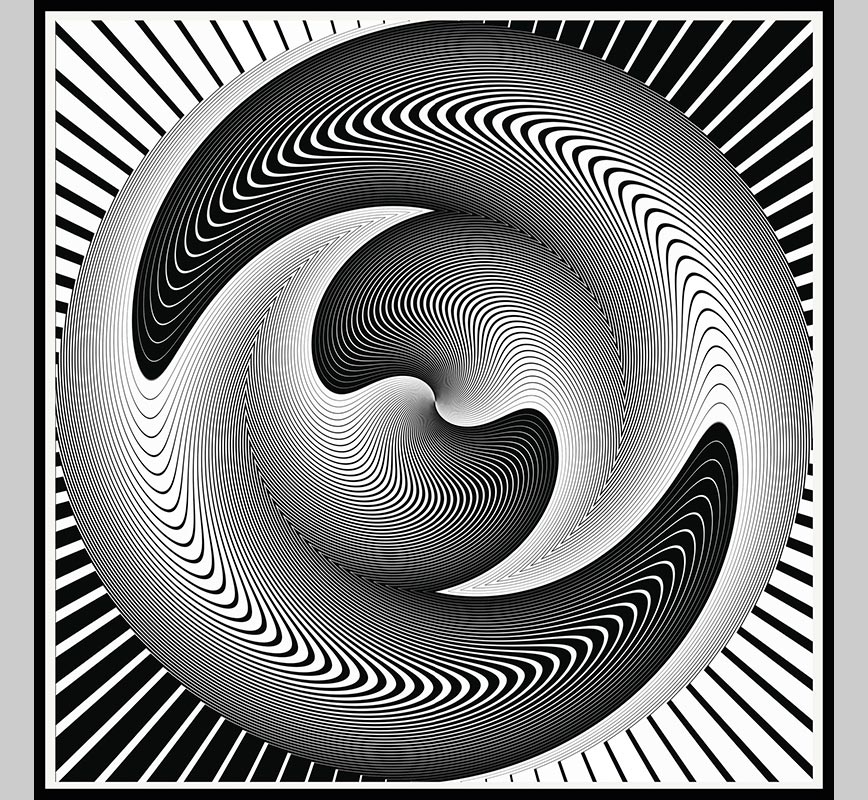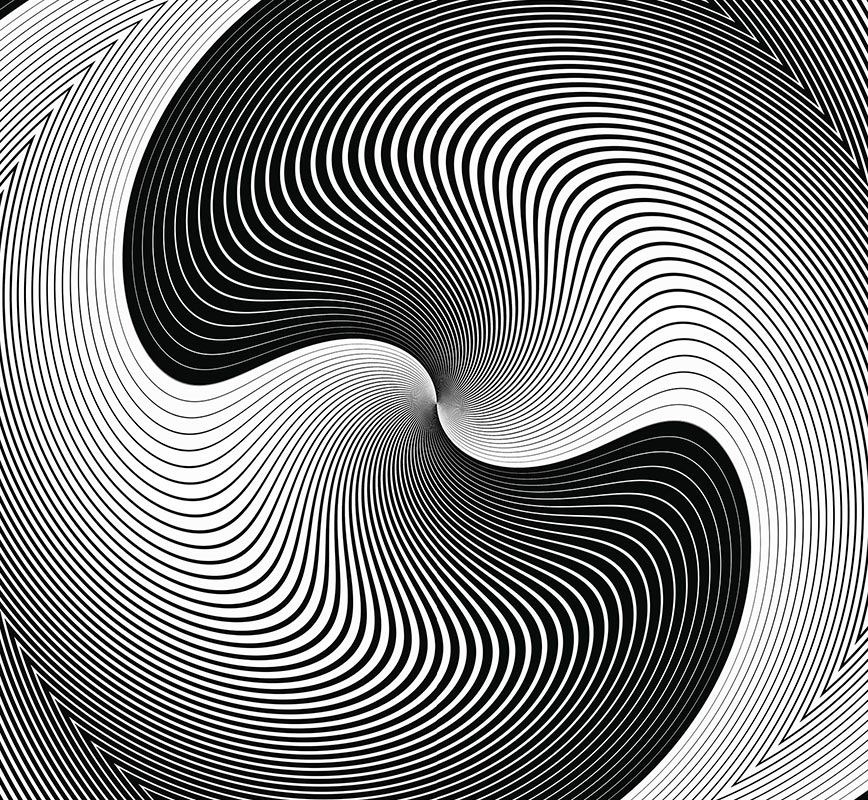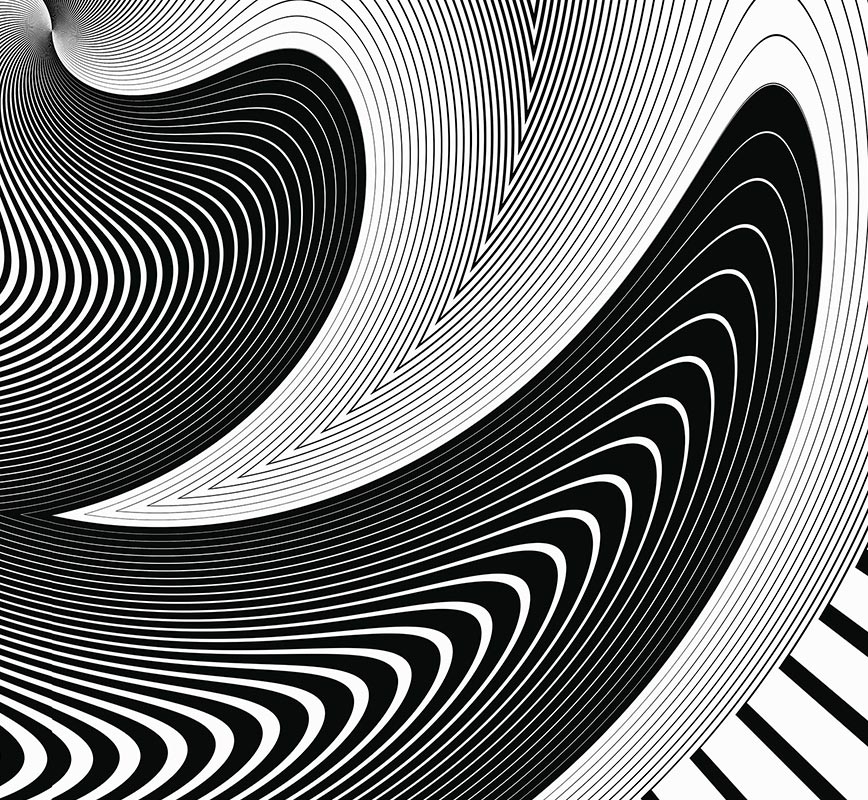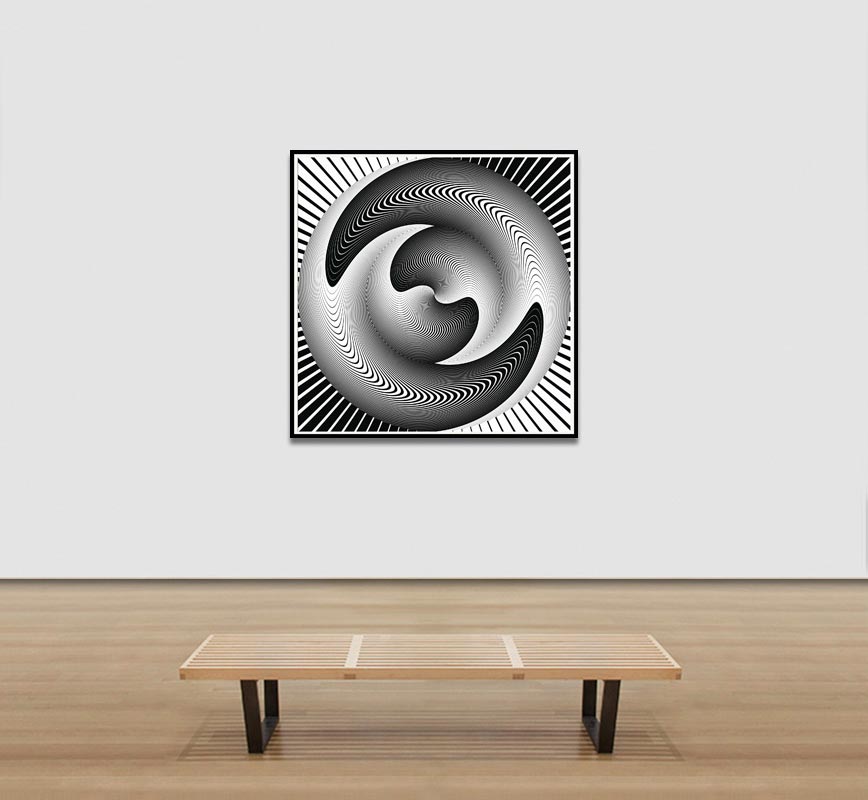At first glance, this striking artwork from Enzo Ragazzini’s Creature series appears to portray a surreal mask —part feline, part human, perhaps even insectoid. But step closer, and you realize that this apparition has emerged from the fractured surface of a wall. The original subject—a decaying expanse of painted plaster—is the foundational reality of the work. It is only the beginning of the transformation.
Through a process of mirroring, Ragazzini teases out forms latent in the surface. In this composition, symmetry draws the viewer’s eye toward a central figure: two dark voids serve as eyes, textured ridges suggest a nose, and a bold red patch below reads as lips. This is pareidolia at its most seductive—an uncanny presence summoned not through construction, but through perception. The artist does not invent a figure; he reveals one.
The final stage is the photographic artwork itself: the image, once mirrored and recomposed, is recontextualized as an autonomous visual object. In this form, it transcends the sum of its parts. Getting close to the printed work, one discovers painterly fields of texture, hue, and depth. Ochres, rust reds, celadons, and silvers play across the surface like abstract brushstrokes—what once was decay now pulses with new visual life.
This singular image is part of Creature, a series Ragazzini began in 2013. The project invites viewers into a world where ordinary surfaces—walls, driftwood, agave leaves, urban remnants —are transformed into beings that straddle the boundary between the real and the imagined. The mirrored compositions conjure ambiguous presences —half-human, half-animal, sometimes grotesque, sometimes mythical— that hover between abstraction and figuration.
The Creature series draws from a long tradition of artistic observation. Ragazzini finds kinship with Leon Battista Alberti and Leonardo da Vinci, who both reflected on the mind’s ability to perceive figures in natural forms —be it stains, clouds, or cracked stone. This phenomenon, known as pareidolia, is the psychological tendency to see familiar shapes —often faces— where none were intentionally placed. Ragazzini channels this perceptual instinct into a contemporary photographic language. His process is not about technical manipulation, but perceptual revelation. He uses digital tools not to impose order, but to reflect back the hidden logic already embedded in the visual world. The result is an uncanny symbiosis between matter and imagination, where the viewer completes the work through their own recognition and interpretation.
In this way, his art also resonates with the spirit of Surrealism—recalling the chance-based explorations of Max Ernst’s frottages or Oscar Domínguez’s decalcomania. Yet unlike those historical techniques, Ragazzini’s mirrored photographs are unmistakably of our time, bridging the material world and the digital with a rare sensitivity to both form and feeling.
That process—of discovering what lies beneath or beyond the visible—has long been at the heart of Ragazzini’s work. Since the 1950s, he has explored the expressive potential of photography through experimental darkroom techniques, crafting visual effects through analog light. In the digital era, that legacy continues: the computer becomes the new darkroom, and image processing an extension of tactile, exploratory seeing.
The Creature series embodies this continuity. What begins as documentation of the real becomes, through Ragazzini’s artistic approach, a portal to another way of seeing. His photography does not show us what he sees, but what he intuits might be there all along, waiting to surface. His art invites us not just to observe, but to discover how the familiar can become strange, and how the surface of the world, seen through his eyes, can reveal something entirely new. Through this poetic lens, Creature becomes not just a series of surreal images, but a meditation on perception, memory, and the metaphysical possibilities of the visible world.
less...




